Art History
3 Things You Should Know About ‘Island of the Dead,’ a Once Wildly Famous Now Obscure Painting Full of Mystery
Created by Swiss painter Arnold Böcklin, the haunting work still has some secrets.
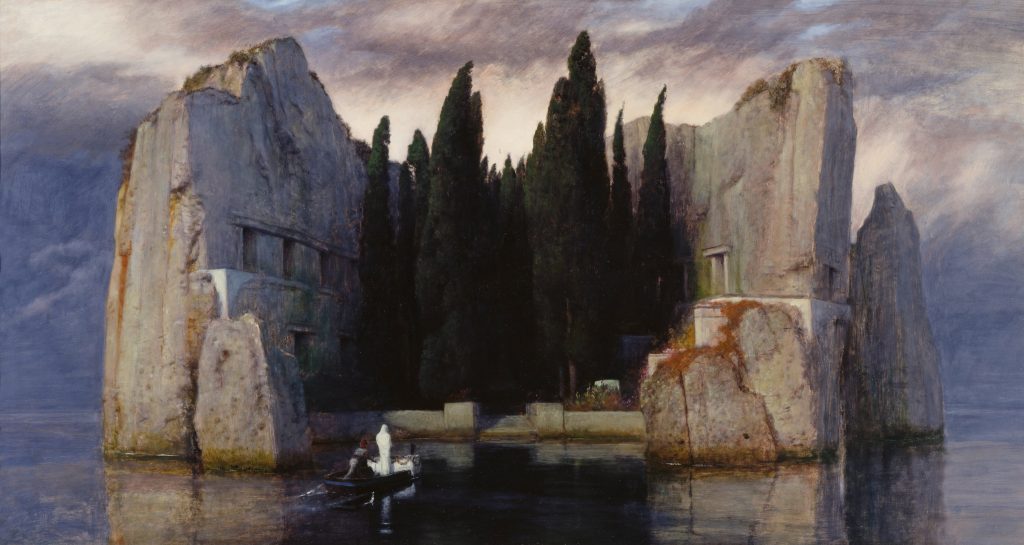
Created by Swiss painter Arnold Böcklin, the haunting work still has some secrets.

by
Annikka Olsen

Though Arnold Böcklin’s mysterious painting Isle of the Dead, alternately known as Island of the Dead, may be passingly familiar to some, today it is widely considered rather obscure within the annals of art history. It may be surprising, then, to learn that in the late 19th and early 20th centuries, it was one of the most famous paintings in all of Europe. In his 1934 novel Despair, Russian American novelist Vladimir Nabokov noted that a reproduction of the painting could be “found in every Berlin home,” as prints of the work were so widely reproduced and sought after. This was due in large part to the efforts of Böcklin’s art dealer Fritz Gurlitt, who commissioned massive, high-quality print runs of the work at the turn of the century.
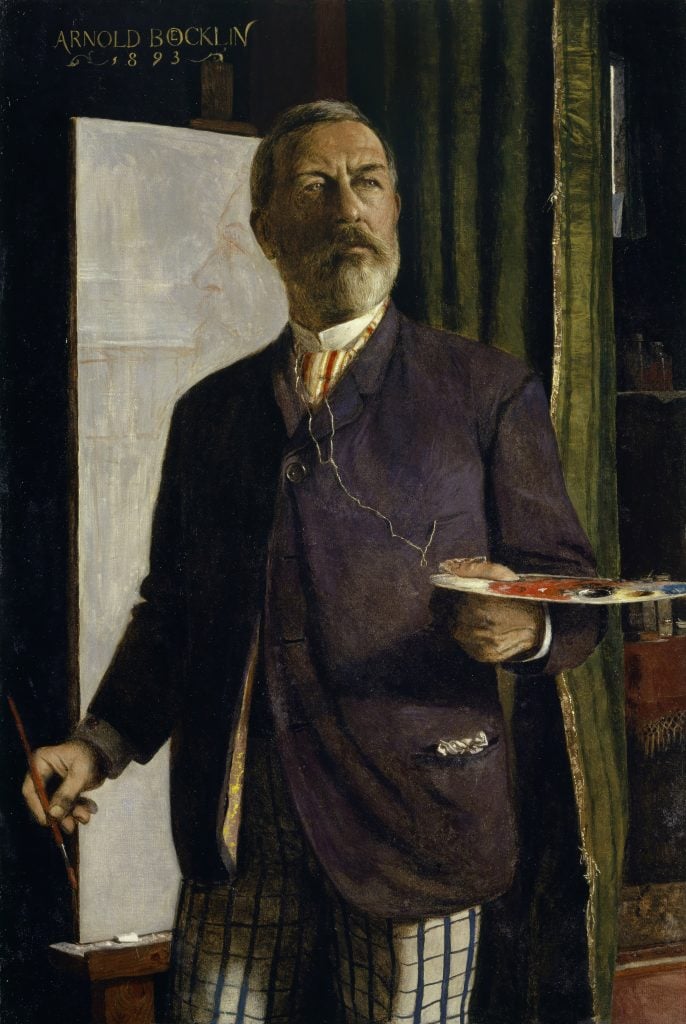
Arnold Böcklin, Self-Portrait in the Studio (1893). Collection of Art Museum Basel. Photo by Fine Art Images/Heritage Images via Getty Images.
Böcklin (1827–1901) was a Swiss symbolist painter whose work was heavily influeced by Romanticism and the work of the English Pre-Raphaelites, as well as mythology and antiquity. He achieved considerable success and recognition in his lifetime. However, his legacy ultimately suffered following his death—largely due to the then-burgeoning trend towards Modernism. His figurative, narrative paintings, full of mysticism and fantasy, were at odds with the growing preference for abstraction. As art critic Clement Greenberg observed in a 1947 essay, his oeuvre was “one of the most consummate expressions of all that is now disliked about the latter half of the 19th century.”
Isle of the Dead was originally commissioned by one of his patrons, Marie Berna, who, after observing a partially finished canvas in Böcklin’s studio, bid it be made into a memorial to her deceased husband. The work features a small, shadowy island dotted with cypress trees, replete with a stone seawall and entryways and ramparts built into the towering cliffs. Approaching from the water is a small boat, carrying a boatman, as well as a coffin and figure both shrouded in white—with this final detail being added at Berna’s request. The boat and the figure at its helm have drawn comparisons to Charon, the ferryman from Greek mythology who would take the souls of the dead across the River Styx to Hades. It is a quiet and austere composition, seeming to beg as many questions as it answers.

Islet of Pontikonisi, Corfu, Ionian Islands, Greece. Photo: Dimitris Pachakis.
Lending to the simultaneously sublime and uncanny appeal of the painting is that it is not a direct depiction of any real place, even though it is generally believed to be inspired by the Islet of Pontikonisi near Corfu, Greece. And Böcklin himself never offered any explanation of the work or its meaning beyond saying it was “a dream picture.” Even the title itself does not offer many clues from Böcklin or his imaginations, as it was, in fact, titled Isle of the Dead by the dealer, Gurlitt, who drew it from a turn of phrase used in a letter by its original commissioner, Berna.
Below, we delve further into this once-famous, now obscure painting and found three intriguing facts about it that you should know.
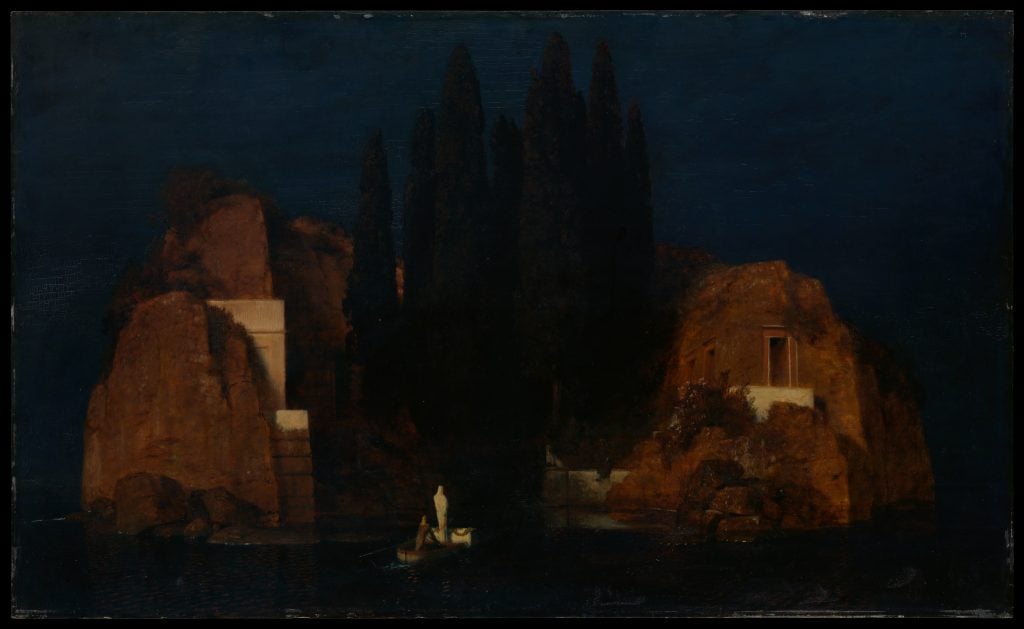
Arnold Böcklin, Island of the Dead (1880). Collection of the Metropolitan Museum of Art, New York.
As haunting as the painting may be to viewers, it seems to have to some extent haunted Böcklin as well. The first painting he made, the one that his patron Berna caught a glimpse of while it was only partially completed, was for a patron named Alexander Günther. But, ultimately, Böcklin kept this work for himself. The smaller version subsequently completed on wood panel for Berna, now in the collection of the Metropolitan Museum of Art, New York, was followed by another version in 1883 that shows stark differences from its predecessors.
Though similarly depicting an islet and boat with figures, the color palette is instead much brighter and luminous, rather than shrouding much of the composition in shadow it is full of diffuse light. The cliffsides and sky are illuminated in pale shades of pink and purple, and the architecture within the natural landmass has been rearranged—not least of all by the inclusion of the artist’s own initials above one of the entryways. Made at the request of Gurlitt, it shows an attempt to create the same scene but without the same sense of ominousness or finality.

Arnold Böcklin, Isle of the Dead (1883). Collection of the Museum of Fine Arts, Leipzig.
A fourth version was created in 1884—perhaps out of recognition of the painting’s success or marketability—but was destroyed during World War II, with only a black-and-white photograph left to record it. In 1886, the Museum of Fine Arts, Leipzig, commissioned a fifth iteration of the Isle of the Dead, where it still hangs today, and a sixth and final version was completed with the help of Böcklin’s son Carlo in 1888, which is currently in the collection of the State Hermitage Museum, Saint Petersburg, Russia.
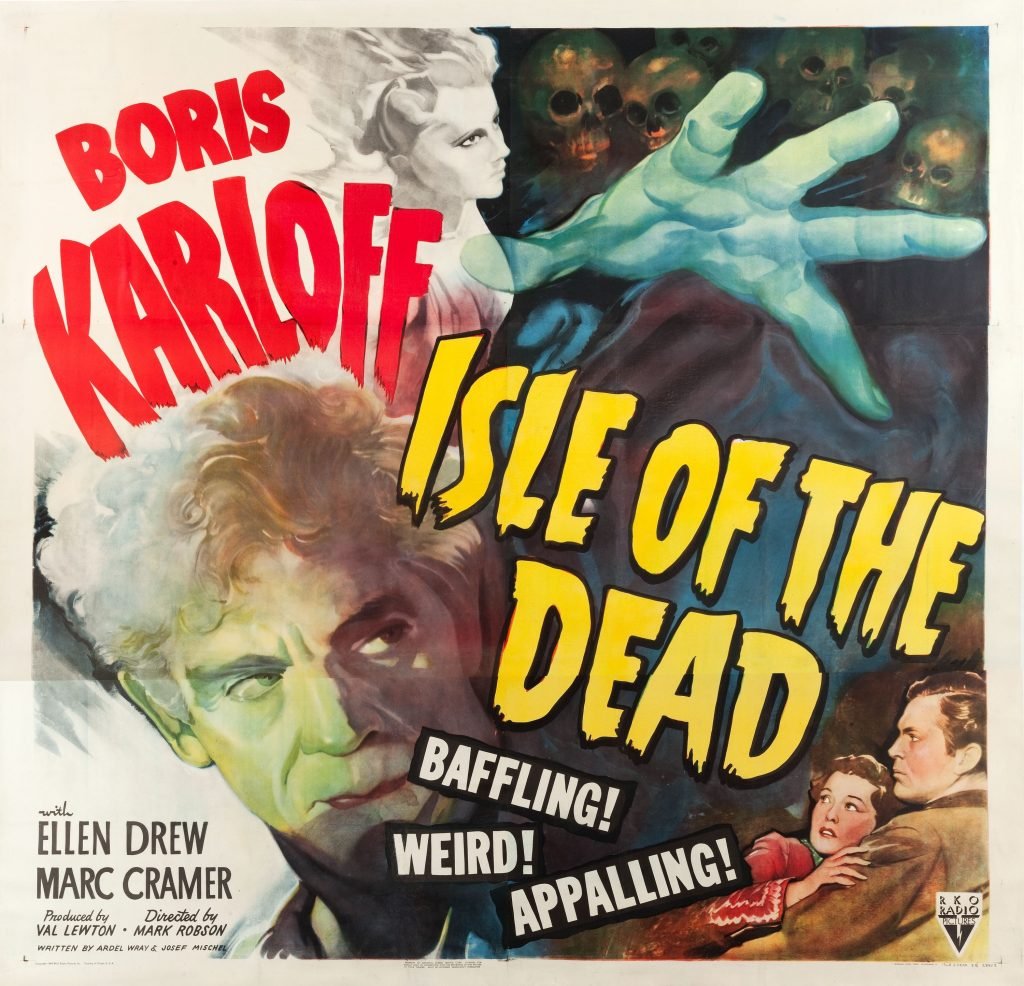
Isle Of The Dead (1945) movie poster. Left to right: Boris Karloff, Ellen Drew, Marc Cramer on poster art. Photo: LMPC via Getty Images.
Despite its aforementioned relative obscurity today, it cannot be understated how widely known and appreciated Isle of the Dead was in the first half of the 20th century, including amongst important historical figures. Russian Communist Party founder Vladimir Lenin, inventor of psychoanalysis Sigmund Freud, and former French Minister of War Georges Clemenceau are known to have all had prints hanging on their office or study walls. And the third version of the painting from 1883, commissioned by Gurlitt, was purchased by none other than Adolf Hitler (it’s currently in the collection of the Staatliche Museen zu Berlin).
It has also been a source of inspiration for other artists and creatives. In 1909, Sergei Rachmaninoff composed the symphonic poem Isle of the Dead. He had seen a monochrome reproduction of Böcklin’s painting of the same name while participating in art critic Sergei Diaghilev’s “Saison Russe” (predecessor to the “Ballets Russes,” a showcase of Russian arts and culture) in Paris in 1907. Inspired by the composition, Rachmaninoff waited several years before creating his own Isle of the Dead so he could see the image in color, which he was able to in Leipzig, noting he may have not composed it at all if he hadn’t.
In 1945, the movie Isle of the Dead, staring Boris Karloff of Frankenstein (1931) fame, hit screens, with the script inspired by Böcklin’s work and featuring the painting behind the title credits. More recently, in the 1970s Swiss artist H. R. Giger, arguably most famous for his visual effects work on the movie Alien (1979), painted Homage to Böcklin (1977), based on the original composition but with a distinct Gigeresque bio-mechanical flair and aesthetic.
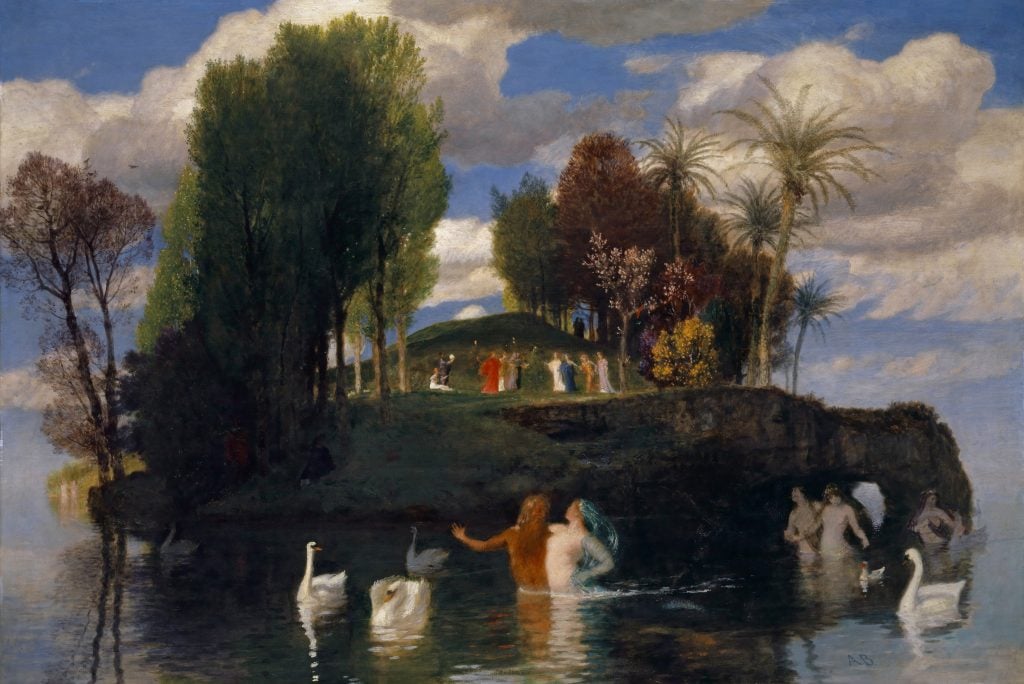
Arnold Böcklin, Island of Life (1888). Collection of Kunstmuseum Basel. Photo: Fine Art Images/Heritage Images via Getty Images.
While Isle of the Dead took Europe by storm during its time, Böcklin actually created a counterpart to the painting that has remained even lesser known. Titled Island of Life, it was made in 1888, the same year as the final version of Isle of the Dead—perhaps indicating some artistic conclusion or revelation. Described by the artist as an “antipode” to Isle of the Dead, instead of using a subdued color palette and depicting a somber scene, Isle of Life is full of light, color, and activity. A variety of trees, ones that would not be found together in nature, from palms to blossoming cherries, flourish across the landmass, centered around a small meadow full of colorfully dress revelers. And in the foreground, swans and figures (possibly merpeople?) promenade through the water. Unlike its antecedent, only one version of this composition was every made by Böcklin, and it currently resides in the Kunstmuseum Basel, the artist’s hometown, where the collection also holds one of the 1880 versions of Isle of the Dead.
Böcklin never returned to the Isle of the Dead composition following the creation of The Island of Life, possibly finding some poetic counterbalance or sense of finale in the achievement of the later.